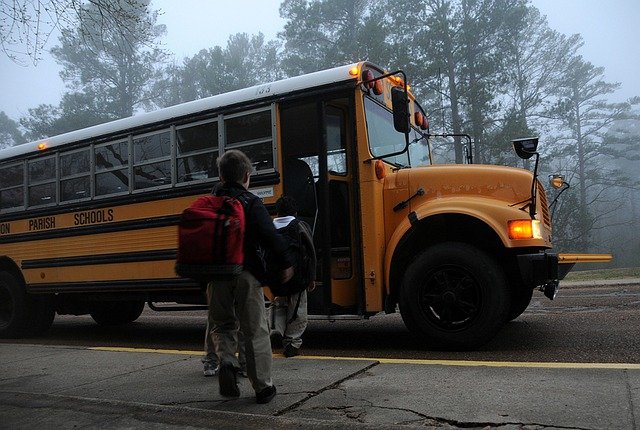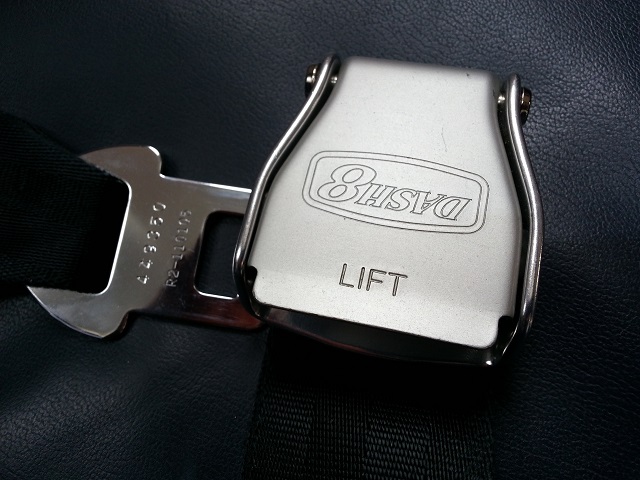
Image Credit: ebpilgrim / Pixabay
If your child rides to school in a school bus you probably have experienced the mild anxiety of letting them go off in a vehicle driven by someone else. Thankfully, everything about a school bus is designed to keep your child safe.
The bright yellow color of your child's school bus isn’t just an avant-garde design choice, but a deliberate safety decision to make sure the vehicle transporting your most precious cargo to and from school every day is visible and easily identifiable on the road. Those high seatbacks, flashing lights, giant mirrors, and stop signs are all important safety features. Your child is safer in a school bus than in most other vehicles.
Even though school buses are designed to be safe and school bus drivers are trained in safety measures, there is never enough you can do to keep your little one safe. Here are some tips for you and your child to keep them as safe as possible in and around the school bus.

Image Credit: Wikimedia Commons
Use the seatbelt
It’s a good idea to teach your child that they should be wearing a seatbelt in any moving vehicle, but they are more likely to be sitting unbuckled in a bus where there may only be one adult supervising two dozen or more children. Teach your child to immediately buckle themselves in and stay buckled until the bus comes to its final destination- school or home.
Stay seated
In that same vein, teaching your child to remain seated while the bus is in motion will ensure they are in the safest possible situation. You may remember your days of riding in the school bus, kids stood up in the seats talking over the high seat backs and swapping stories or running back and forth and switching seat partners. While those may be fond memories now, it’s dangerous for children to be unbuckled and move around a bus in motion. Let them make their fun memories in the school building.
Wait with your children at the bus stop
For small children, it is a good idea to wait with them at the bus stop, and make sure you are both visible to the driver and other passing vehicles. It may be tempting to drop your children off at the bus stop or let them walk up the road on their own but if you’re waiting with them, you can ensure that they are safely waiting and picked up. While you wait with them you can take the time to teach them road safety so that once they are old enough to wait for the bus alone, you’re sure that they have the tools to remain safe and sound.
Stand three big steps away from the curb
Teaching your children to stand a safe distance away from the curb ensures that they are out of harm’s way when the school bus approaches. Standing three big steps back also makes sure that the bus driver can fully see them, and a path can be made to get on the bus in an organized manner.
Teach your children how to get on and off the bus
Your child should know to wait until the bus has come to a complete stop before approaching it. Show your child how to calmly line up and get on the bus without pushing or shoving other children. Teach them to hold onto the handrail and make sure that they don’t get their shoelaces, or any straps caught in the doors. Introduce them to their bus driver so that they know to trust them enough to let them know if anything does happen and they need help getting unstuck and, on the bus, safely. The driver is usually the only adult in charge of your child's safety during their drive to school, you should get to know them and make sure your child feels safe going to them if they need any help.
Teach your child how to cross the street
If your child must cross the street in front of the bus, you should teach them a few things to keep them safe. Firstly, like any other road crossing, your child should look both ways. Then they should take five big steps in front of the bus and make eye contact with the driver to make sure they are at a safe distance, are visible and the driver can put out the bus’s stop sign and make sure there is no oncoming traffic or cars going around them while your child is crossing.
Additional Resources
- Bellwether Education Partners, Miles to Go: Bringing School Transportation into the 21st Century (May 2017).
- National Highway Traffic Safety Administration
- National Transportation Safety Board
- National Highway Traffic Safety Administration's School Buses site.
- National School Transportation Association
- National Association of State Directors of Pupil Transportation Services
- National Safety Council
- National Association for Pupil Transportation (NAPT)
- NCSL/NHTSA Traffic Safety Legislation Database
- Report on bus crashworthiness from the National Transportation Safety Board.
- School Transportation News
- School Bus Fleet Magazine



